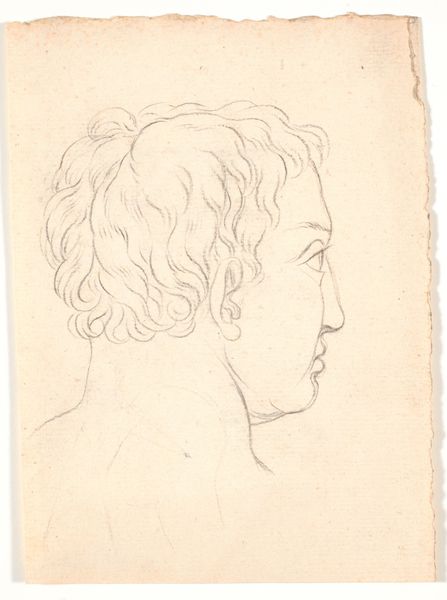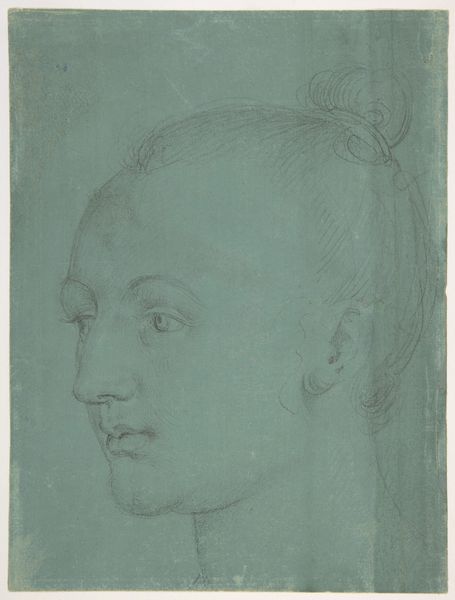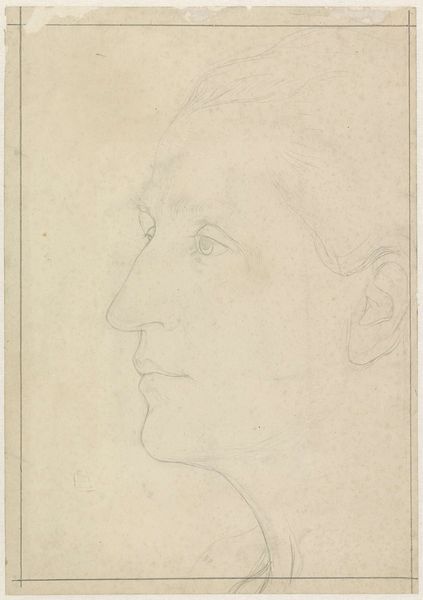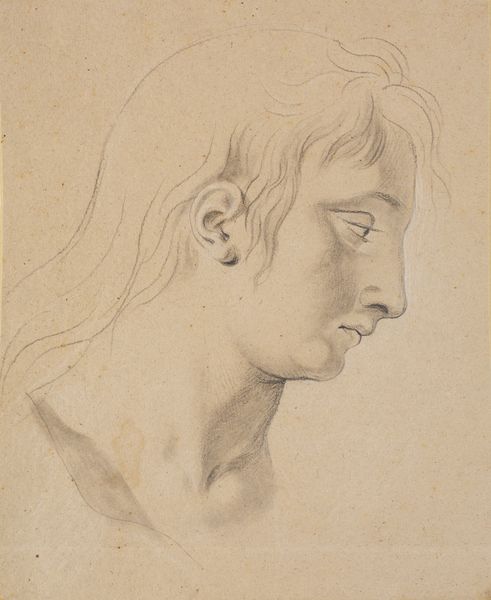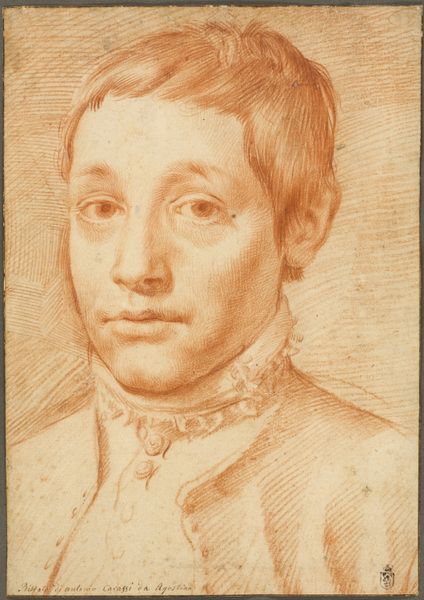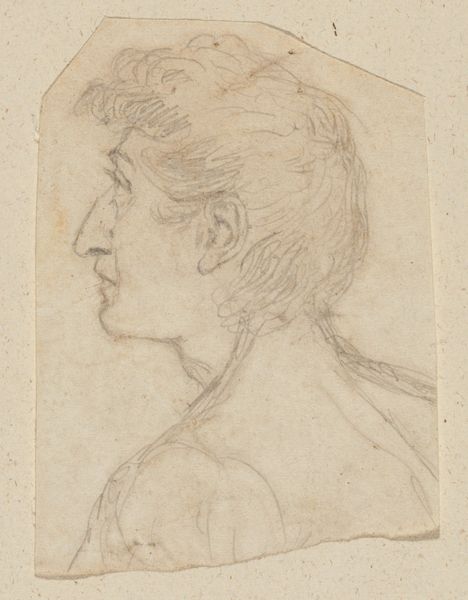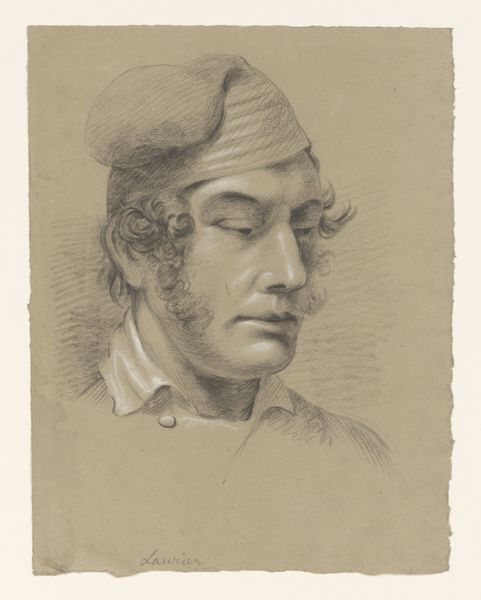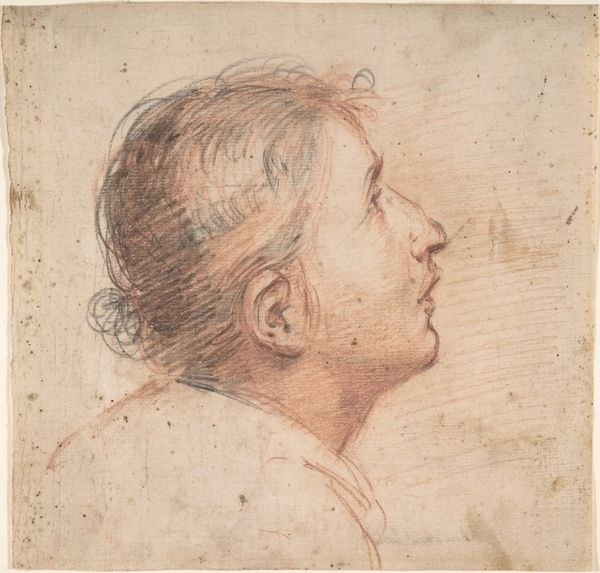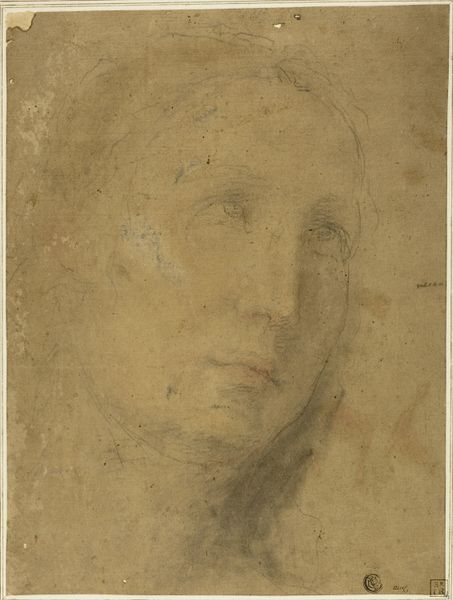
drawing, pencil, graphite
#
portrait
#
drawing
#
neoclacissism
#
pencil drawing
#
pencil
#
men
#
graphite
#
portrait drawing
#
history-painting
#
academic-art
#
italy
Dimensions: 12 1/16 x 9 1/2 in. (30.7 x 24.1 cm)
Copyright: Public Domain
Curator: The quiet repose of Andrea Appiani's "Study for the Portrait of General Desaix," created between 1795 and 1805, immediately strikes me. A rather stoic countenance, wouldn't you say? Editor: Yes, though subdued might be a better descriptor. I'm immediately drawn to the gray paper – a choice that mutes the potential drama, suggesting perhaps the melancholy that so often clings to historical figures caught between revolutions and shifting empires. What strikes you, formally? Curator: The linearity, undoubtedly. The graphite pencil work renders the form with incredible precision; look at the profile! There’s a classicism evoked here, a debt to sculptural ideals made modern. I would be remiss if I didn't mention his mastery of the material - such sensitivity within each line! Editor: Quite. It embodies Neoclassical ideals, hearkening back to the Roman Republic, ideals that shaped European identity and imperialist ventures during the late 18th Century. One wonders about Appiani’s intended audience. Surely portraits like these played a role in shaping the public image of these leaders. Curator: Most definitely. Note the distinct lack of any embellishment or heroic adornments typical in that era. The emphasis rests solely on Desaix’s visage and form; the character emerges almost nakedly through the sharp outlines and stark tonal variation. It all evokes that formal austerity of the Neoclassical pursuit. Editor: And yet the vulnerability is so apparent in his soft expression and averted gaze. Desaix was an incredibly significant French general under Napoleon, revered but ultimately killed in battle in 1800. Doesn't this drawing also portray the transient nature of power, memory, and the creation of national icons? The pencil serves as an intimate marker. Curator: I hadn't considered the dimension of temporality with respect to such materials but I now appreciate how critical it is to decode these subtle artistic signifiers that go beyond representational content and delve deeper towards emotional affect. A worthwhile addition to our framework indeed! Editor: Agreed. It underscores that artistic renderings never stand neutrally but actively mediate social remembrance through carefully curated visual lexicons—be them material, formal, or historical. Curator: Thank you. Your socio-historical contextualization provided such nuanced perspectives into Appiani’s formal execution here. Editor: And your acute sensitivity to form brings into relief all the public undertones behind these austere pencil lines!
Comments
No comments
Be the first to comment and join the conversation on the ultimate creative platform.
